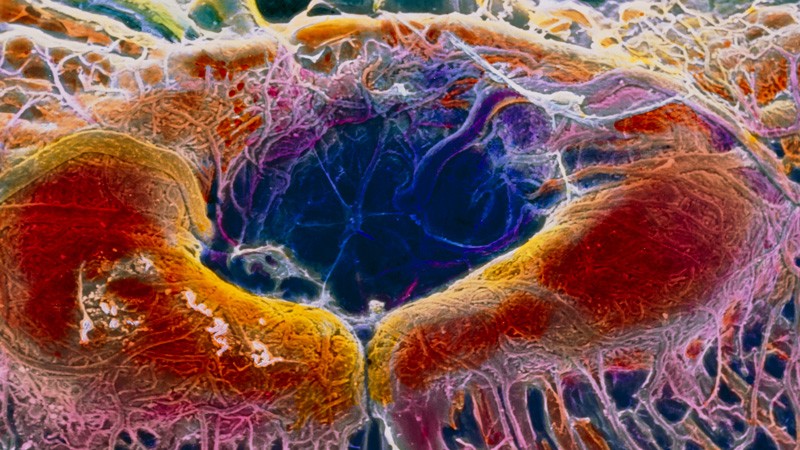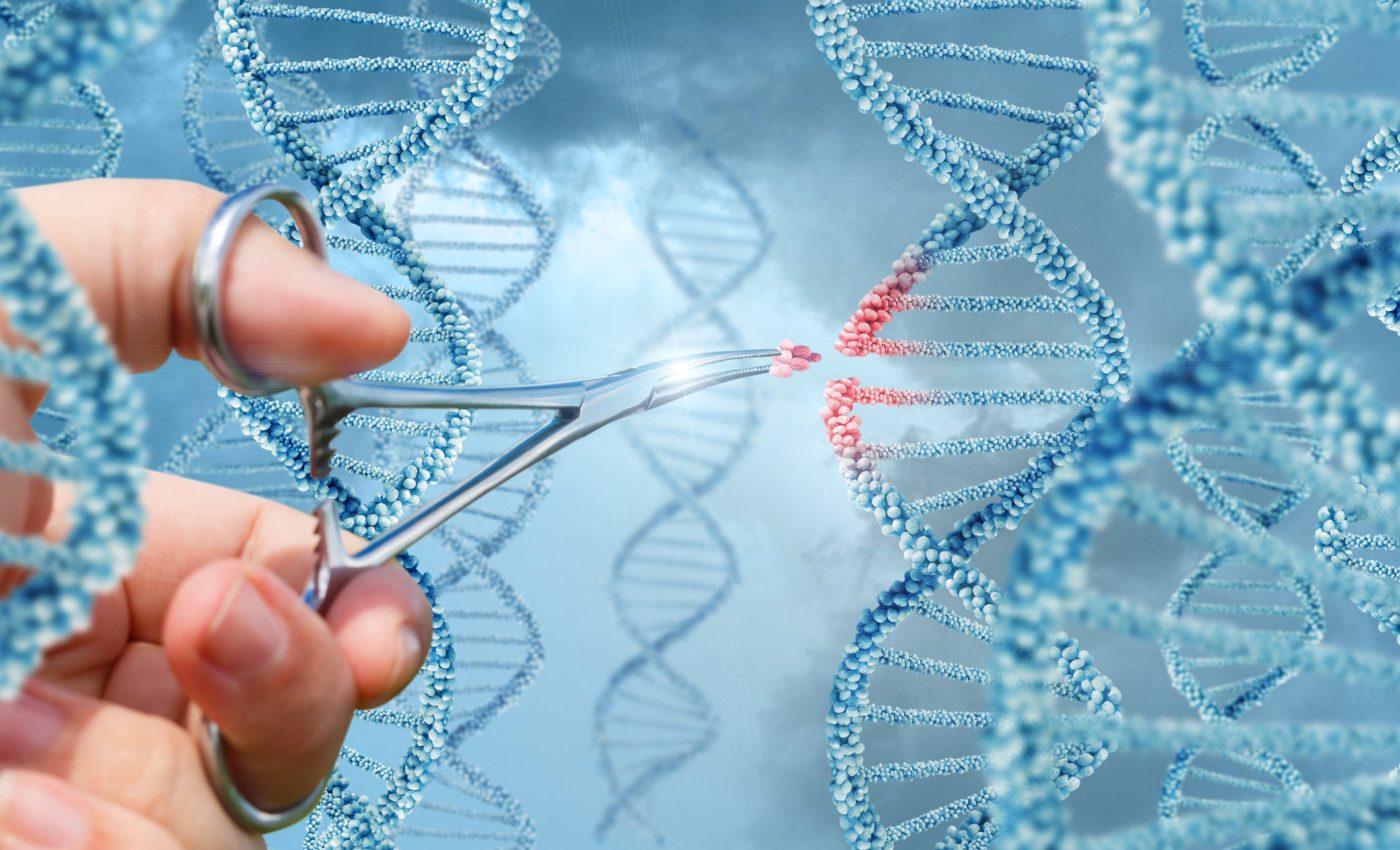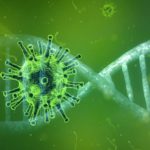Leber’s congenital amaurosis 10 (LCA 10) is a severe eye disorder, which affects the retina. The retina, a specialized tissue situated at the back of the eye, is responsible for the detection of light and colour. LCA 10 is an inherited disease that begins in infancy. Patients with LCA 10 have blindness or severe visual impairment. The initially stable blindness may get worsen slowly over time. No treatment for LCA10 is available currently.
For the first time, scientist used the gene-editing tool CRISPR-Cas9 inside a patient’s body to treat LCA 10, a new innovative attempt to treat rare disorders using gene therapy.

CRISPR-Cas9 is a distinctive gene-editing technology that allows scientist and medical researchers to edit parts of the genome by separating, adding and changing DNA segments. It is a natural defense system of bacteria against viruses. Researchers remodelled the system to make precise alterations to the human and other animal’s DNA.
CRISPR-Cas9 gene-editing system includes two important molecules, which causes mutation into the DNA, Cas9, and Guide RNA (gRNA). Cas9 is an enzyme that cuts two strands of DNA at specific locations so that the DNA segment can be added or removed. Cas9 behaves as molecular scissors. The gRNA includes a small piece of pre-designed RNA sequence, about 20 bases long. RNA bases are complementary to those of the target DNA sequence in the genome. The gRNA only binds to the target sequence of the genome. The CAS9 enzyme follows the gRNA and cuts at the exact point in the genome. As soon as the DNA is cut, researchers repair it by using cell’s DNA repair system to add or remove segments of genetic material, or researchers alter the DNA by replacing original segments with the customized sequence.
CRISPR-Cas9 has many prospective applications such as correction of genetic defects, treatment and prevention of the spread of diseases. It is the most versatile, simple, and accurate method of gene editing.
Allergan and Editas Medicine are jointly developing the treatment for LCA 10. The Casey Eye Institute at Oregon Health & Science University in Portland conducted a clinical trial on a patient suffering from LCA 10. This landmark clinical trial is named as BRILLIANCE. The BRILLIANCE clinical trial is testing an experimental CRISPR based medicine AGN-151587 (EDIT-101). It is administered in the patient’s body via subretinal injection.
Here, in this trial, the components of the gene-editing system, which are encoded in the genome of a virus are injected near photoreceptor cells, directly into the eye of the patient. The clinical trial will check the potentiality of the CRISPR–Cas9 gene-editing techniques to remove mutations, which are responsible for LCA10. Mutations in the CEP290 gene are responsible for LCA 10. CEP290 is present on the Q arm of chromosome 12. CEP290 gene is a centrosomal protein involved in centrosome and cilia development. In BRILLIANCE, Clinical trials CRISPR-Cas9 gene-editing technique is tested to remove mutations in the gene CEP 290.
In standard gene-editing therapies, a virus is used to insert a healthy copy of the mutated gene into the affected cell. However, according to Artur Cideciyan (University of Pennsylvania), CEP290 is too large to slip the entire gene into a viral genome. Mutations in CEP290 gene damage light-sensing cells called photoreceptors in the retina. However, the photoreceptors cells are still present and alive in the patients of LCA10. According to Mark Pennesi, (Specialist in inherited retinal diseases at, Oregon Health & Science University in Portland) these cells can be reactivated.
Another therapy for LCA 01 is an experimental treatment called Sepofarsen. Sepofarsen uses antisense therapy to treat LCA-10 to cure vision in the patients’ with hereditary blindness.
Although the CRISPR technology is discovered in 2012 and is widely used for scientific research, BRILLIANCE is the first clinical trial of the CRISPR technology in the human body. Researchers are eager to find out the action of CRISPR-Cas9 inside the human body. If these trials are successful, it could be a great encouragement for the future trials of CRISPR-Cas9 for a wide range of genetic diseases including cystic fibrosis, Duchenne muscular dystrophy and others.
Using CRISP-Cas9 gene-editing system to treat childhood blindness is a significant milestone in CRISPR gene therapy. It may take some time to find out the results of the treatment, but it is truly a ray of hope for all those suffering from childhood blindness, across the globe.
- References:
- https://www.nature.com/articles/d41586-020-00655-8?WT.ec_id=NATURE-20200312
- https://www.healio.com/ophthalmology/retina-vitreous/news/online/%7Bb90c4f76-c62a-4b11-ab80-cc80e318791d%7D/first-patient-treated-with-crispr-medicine-in-phase-12-trial
- https://clinicaltrials.gov/ct2/show/NCT03872479
- https://www.yourgenome.org/facts/what-is-crispr-cas9
- https://www.richarddawkins.net/2020/03/crispr-treatment-inserted-directly-into-the-body-for-first-time/
- https://www.theguardian.com/science/2020/mar/04/doctors-use-gene-editing-tool-crispr-inside-body-for-first-time
- https://www.molecular-medicine-israel.co.il/crispr-treatment-inserted-directly-into-the-body-for-first-time/
- https://www.scientificamerican.com/article/crispr-treatment-inserted-directly-into-the-body-for-the-first-time/
- https://www.sciencenews.org/article/crispr-gene-editor-first-human-clinical-trials
- https://www.newscientist.com/term/what-is-crispr/#ixzz6H7B8Ztew










